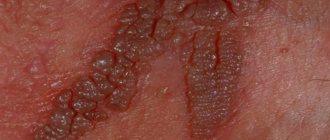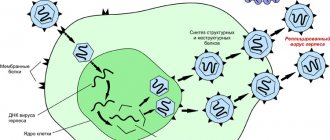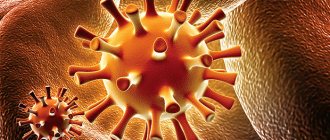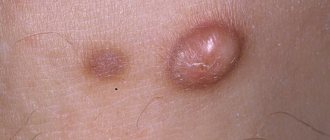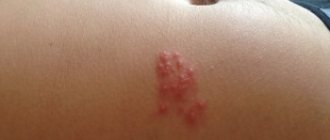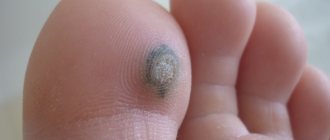When most people mention the word “herpes,” they associate it with painful skin rashes. However, herpetic infections have other manifestations and often do not have them at all.
It all depends on the type of virus. More than two hundred viruses of this family are known to science, eight of them can infect humans. Statistics show that by the age of forty, the presence of herpetic infection is determined in 90% of the population, most of them become infected in childhood.
All members of the HSV family are DNA viruses that cause chronic carriage. All members of the family choose nerve or plasma cells to live, remaining in a latent form for a long time with a normally functioning immune system. Decreased immunity provokes the development of exacerbation, specific for each type.
Herpes simplex virus type 1 (Herpes simplex labialis)
The most famous member of the family. It is this that causes “colds” on the face. It is transmitted by contact and also by airborne droplets. Penetrating through lesions on the skin and mucous membranes, HSV simplex selects for life the nerve fibers and ganglia of the facial and trigeminal nerve.
A carrier can transmit the virus only in the acute phase of the disease.
Exacerbations of the disease occur during periods of weakened immunity against the background of:
- ARVI;
- prolonged hypothermia;
- stress;
- long-term malnutrition;
- avitaminosis;
- decompensation of chronic diseases;
- taking medications that suppress the immune system.
Herpes simplex virus type 1 Primary infection with HSV 1 usually goes unnoticed.
Once in the body, Herpes simplex labialis can remain without manifestations for a long time. When favorable conditions arise and the host body cannot suppress the rapid proliferation of the virus, an exacerbation occurs. The incubation period usually takes several days. At this time, a person may feel slightly unwell and weak. On the eve of the appearance of the rash, the body temperature may rise, but an exacerbation of HSV 1 often occurs against the background of a normal temperature reaction. At the site of future rashes, tingling and itching are felt. A few days later, the skin becomes red and covered with small blisters containing a cloudy liquid. During this time, the affected area may be itchy and painful.
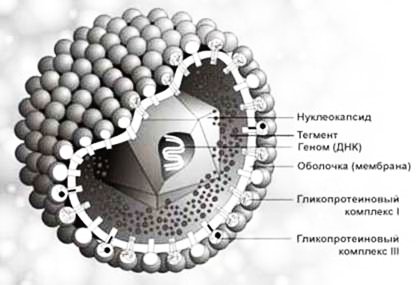
Structure of the virus Over the next few days, the blisters break open to form ulcers. Rashes at this stage are accompanied by severe pain. Healing of ulcers lasts from one to two weeks with the formation of crusts. After recovery, the skin is completely restored, without scars or defects.
A typical site of rash with HSV 1 is the skin and mucous membranes of the face (lips, nose, cheeks, neck), which is due to the location of the nerves in which HSV 1 is in the latent period. However, herpes simplex virus type 1 simplex can affect other parts of the body (back, chest, abdomen, limbs), and with a significant decrease in immunity, it becomes the causative agent of meningitis and sepsis.
It is not uncommon for HSV 1 rashes to appear in the pelvic area and genitals of adult men and women - typical locations for the second type. This manifestation occurs during the genital (sexual) method of infection with the virus, during oral sex.
Characteristics of infectious mononucleosis
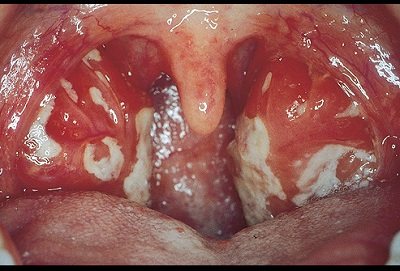
The source of infectious infection is people who are carriers of mononucleosis. The virus is transmitted both through airborne droplets and through direct contact with contaminated objects. You can acquire the herpes virus type 4 during blood transfusions and during oral sex.
As soon as the virus enters the body, it begins to actively divide inside cells and then occupies regional lymph nodes. Liquid media spread the infection throughout the body, and from that moment on, the saliva of the infected person is infectious. The incubation period can last from 5 to 21 days; in children this period can be extended to 50 days.
Primary symptoms of the disease:
- fever over 38C;
- migraine;
- severe joint pain;
- muscle tone;
- nasal congestion;
- soreness.
Mononucleosis causes swelling of the uvula and tonsils. Even the tonsil in the nasopharynx is enlarged, which makes breathing difficult. The patient constantly gasps for air, and when falling asleep, he snores.
Against the background of herpes type 4, sick children often develop pharyngitis, and the back wall of the pharynx becomes red, swollen and covered with a viscous mucous mass. Sometimes in the first few days the tonsils are covered with a yellowish coating; if it appears, the patient’s condition will soon deteriorate significantly.
In the middle of the cycle, the skin and mucous membranes are attacked by the herpes virus, and a focal rash appears on them, which can last for three days and then disappear completely.
In children, the herpes virus, belonging to type 4, selectively affects reticular and lymphoid tissues, this leads to enlargement of the lymph nodes, spleen and liver. The lymph nodes in the neck enlarge so much that it is visually noticeable. By the end of the 7th day they reach their maximum size and remain in this state for several days, after which they decrease.
The liver increases proportionally and reaches its maximum size on the 10th day. Jaundice, which appears due to liver problems, will disappear irrevocably along with other symptoms. Along with the liver, the spleen also suffers, but damage to this organ by the virus does not lead to the appearance of characteristic symptoms.
Infectious mononucleosis increases the number of lymphocyte cells, but they are atypical and should not be present normally. The more such mutated lymphocytes, the more severely the patient tolerates his condition. Children with this pathology are usually admitted to a hospital, where they are under constant supervision.
Herpes of the fourth type is dangerous due to a feeling of constant fatigue, weakness, drowsiness and apathy.
Herpes virus type 2 (Herpes simplex genitalis)
Genital herpes Herpes virus type 2 is similar in structure and properties to HSV 1. The differences lie in the method of transmission: infection usually occurs through the genital route.
It can be transmitted from mother to child during childbirth if the mother has a rash during this period. HSV 2 prefers to live in the body in the nerve nodes of the pelvis, so typical places for rashes in both men and women are the skin and mucous membranes of the external genitalia, buttocks, anus and perineum; this type is also called genital. Herpes simplex type 2, like HSV 1, can remain dormant for a long time without symptoms. A provoking factor for exacerbation of HSV 2 is also suppression of the immune system.
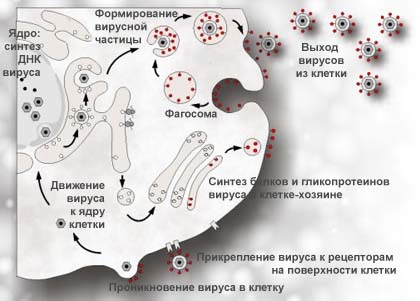
Herpes simplex virus type 2 Exacerbations of HSV 2 disease in men and women begin with the appearance of pain and itching in the affected area. At this stage, enlarged lymph nodes in the groin can be detected. Then a vesicular rash appears, the blisters quickly open. The surface of the affected skin with HSV 2 is painful. The peculiarities of the localization of the rashes determine a longer course of exacerbation than with HSV 1, since the affected area is subject to constant trauma by clothing and human secretions (urine, sweat). Limiting oxygen access promotes the addition of bacterial flora, which complicates recovery.
HSV 2 can also cause rashes in places typical of the first type, which is also a consequence of different types of sex in men and women. This often happens during homosexual contacts. In children, the localization of HSV 2 rashes on the lips is a consequence of transmission of the virus from parents through a kiss. Herpes simplex type 2, like the first type, with serious immunodeficiencies can cause a rash on any other areas of the skin, as well as severe systemic internal lesions
Herpes virus type 3 Varicella-Zoster
Herpes virus type 3 Not everyone knows that chickenpox and shingles are caused by one pathogen: herpes virus type 3 or Zoster.
Most people become familiar with this pathogen in childhood. In children, the virus causes chickenpox or chickenpox. The infection is transmitted through the air, and the herpes virus type 3 in children is highly contagious: you can become infected by being in the same room with a sick person for a short time. The incubation period takes from five to thirty days. By the end of the period, general symptoms appear (fever, weakness, headache); after about three days from the onset of symptoms, rashes appear in the form of individual elements throughout the body. At first, the rash resembles a mosquito bite and is accompanied by severe itching. Then they transform into vesicles, which, when opened, form ulcers. The wounds heal within ten days. During the first week of the acute phase, new elements continue to appear every day, and by the 4th–5th day of the illness, rashes in different stages are present on the body.
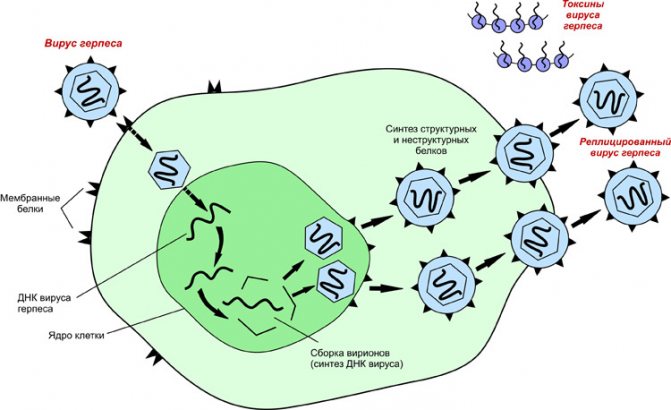
The mechanism of reproduction of the herpes virus It is believed that after suffering from chickenpox, a person develops lifelong immunity and re-infection is impossible. Indeed, repeated cases of chickenpox are quite rare. But, at the same time, type 3 herpes, like other members of the family, is not completely removed from the body, remaining in the nerve cells along the spinal cord.
During the second exacerbation, which develops with a decrease in immunity, as well as with injuries and hypothermia, type 3 herpes will manifest itself as shingles. In adults who did not have chickenpox as children, shingles may be the first manifestation of an infection caused by the herpes virus type 3. But there are often cases of chickenpox in adults, and the disease in them is much more severe than in children.
With herpes zoster, rashes occur along the intervertebral nerve fibers: on the back, chest and abdomen. Herpes virus type 3 always causes unilateral rashes. Skin manifestations are preceded by a rise in temperature, itching and pain in the area of the future rash. The nature of the elements is the same as with HSV1. Wounds heal in up to two weeks, leaving no skin defects except pigmentation, which, like pain, can last a long time (up to a year).
Treatment of exacerbations caused by the first three types of the virus is not fundamentally different. Adult men and women are prescribed antiviral drugs: Famciclovir, Valacyclovir, Acyclovir. The infection can be treated systemically with these drugs, taking tablet forms, as well as using them topically in the form of an ointment. It is contraindicated to treat exacerbations in pregnant women and children with these drugs. Anti-inflammatory and antibacterial agents help treat complications: relieve itching and pain, cope with associated bacterial infections, and speed up the healing of ulcers.
How does it manifest?
The first symptoms of infectious mononucleosis resemble those of ARVI. There are some differences when affected by the fourth type of virus in children and adults.
In adults, the disease begins both against a background of fever up to 39C, and at normal body temperature. Weakness and high fatigue develop, against this background the following are noted:
- nasal congestion without severe runny nose;
- moderate redness of the oropharynx;
- prolonged hyperthermia, reaching in some cases up to 1 month.
At the peak of a herpetic infection, a characteristic triad occurs: fever without chills and sweating, enlarged and hardened lymph nodes and symptoms of sore throat.
Lymph nodes enlarge in the head (on the back of the neck, under the jaw, on the back of the head) and groin. The pain of the nodes is slight, sometimes the skin over them is swollen, there is no redness.
Symptoms of sore throat are more pronounced in adults than in children. I am concerned about a sore throat, a feeling of aching in the joints; upon examination, enlarged tonsils covered with a yellowish coating attract attention.
Newborns and breastfed children do not get sick; they are protected by their mother's antibodies. Until 2 years of age, symptoms resemble an erased picture of a respiratory infection. Older babies have a fever for up to 2 weeks, but their throat hurts longer.
Along with local manifestations, symptoms of damage to internal organs are noted:
- jaundice;
- an increase in the size of the spleen and liver;
- various rashes - from hemorrhagic (with small hemorrhages) to urticarial (itchy blisters);
- nausea and refusal to eat.
Such manifestations last up to 3 weeks, then the condition gradually improves. Immunity after infectious mononucleosis is stable, re-infection is impossible. The virus never leaves the body; a person remains a carrier for life. Among the adults examined, the carriage rate was 100%.
Herpes type 4 (Epstein-Barr)
Epstein-Barr virus This member of the family differs significantly from simplex viruses.
It is transmitted through the saliva of a sick person, which is why it is called the “kissing disease.” Through epithelial cells it penetrates into lymphatic tissues and peripheral blood. Type 4 virus is able to change and adapt to the conditions of the body. Currently, 90% of humanity are carriers of the infection. In most cases, herpes type 4 is introduced unnoticed. Sometimes initial contact is accompanied by symptoms of ARVI. However, with massive aggression against the background of compromised immunity, type 4 herpes can cause the development of infectious mononucleosis. The disease often occurs in children.
In this case, the body temperature rises to 39 and above. A characteristic symptom is severe sore throat, and enlargement of many groups of lymph nodes and the spleen. When the membrane of the spleen is stretched due to an increase in its size, pain occurs in the left hypochondrium of the abdomen. Infectious mononucleosis may be accompanied by joint pain, headache, and pain when pressing on the eyeballs. Despite the violent clinical manifestations, the symptoms of intoxication are mild (weakness, dizziness, nausea) and the patient, even at a high temperature, may not suffer. It is easy to establish an accurate diagnosis using a general blood test, since specific “mononuclear cells” appear in it.
Often with infectious mononucleosis, a generalized rash appears, which is papular in nature and is not accompanied by pain. A typical symptom of the disease is the appearance of a rash after taking penicillin antibiotics.
The disease lasts for about a month. It ends with recovery, while the release of the virus from saliva can last up to 18 months, and sometimes throughout life. A rare but serious complication of infectious mononucleosis is Guillain-Barré syndrome (an acute demyelinating disease of the nervous system).
Currently, there is evidence that type 4 herpes is involved in the development of various oncological processes, autoimmune diseases, secondary immunodeficiency, and chronic fatigue syndrome. All data have varying degrees of evidence and cause controversy among medical scientists. You should not give in to panic after discovering the virus, since, given its total prevalence, it is quite difficult to establish a reliable connection with severe oncological or immune processes. However, it is well established that type 4 herpes is involved in the development of lesions of the brain and its membranes (meningitis, encephalitis), as well as other organs (glomerulonephritis, hepatitis, pulmonitis, polyarthritis) against the background of a pronounced decrease in immunity, for example, with HIV infections.
Herpes type 5 (Cytomegalovirus)
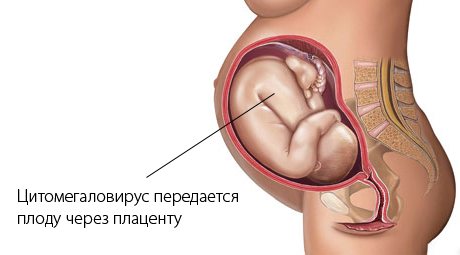
In healthy men and women, herpes type 5 may not appear for a long time. But there is also an acute phase of the disease in people without problems with immunity. In this case, the disease manifests itself with symptoms similar to mononucleosis and ends with recovery. Herpes type 5, like the virus type 4, can be excreted from the body for years. Rare cases of spontaneous cure have been described. Type 5 herpes is dangerous for patients with immunodeficiency (HIV-infected people, people after organ transplantation, cancer patients receiving cytotoxic drugs). In such cases, herpes type 5 becomes the causative agent of severe generalized infections (sepsis, meningitis), which often lead to death.
Antiviral drugs that have anticytomegalovirus infection have significant toxicity, so cytomegalovirus infection should be treated only for health reasons.
Types of Herpes
In humans, 8 forms of the disease in question are diagnosed. The first two types are more common than others; they are both called simple viruses, but differ in external characteristics. Herpes type 2 manifests symptoms in the anus and genital area, and the first form of pathology affects the face, neck and, in rare cases, the central nervous system.
Other types of disease:
- Type 3 – chicken pox and herpes zoster;
- Type 4 – infectious mononucleosis and Epstein-Barr virus;
- type 5 – cytomegalovirus;
- Types 6-8 are poorly studied.
Herpes type 6 (Human herpes virus 6)
Herpes type 6 Herpes type 6 is divided into two subtypes A and B. Subtype A is rare and its effect on the body has been little studied.
Herpes virus type 6 subtype B, on the contrary, like other members of the family, is detected in 90% of the population. Human herpes virus 6 is transmitted through saliva and blood. For infection, close contact with the patient is required, if for adult men and women this is a kiss, then in young children, type 6 herpes is spread through shared toys that receive saliva.
In young children, herpes type 6 is the causative agent of pseudorubella or exanthema. This disease manifests itself as a fever that lasts several days and can cause seizures in children. Another possible outcome of fever in children is a pink rash that protrudes in bumps above the surface of the skin (maculopapular). Therefore, the disease has another name: “infantile roseola.” The rash does not itch or hurt, and turns pale when pressed. Appears on the stomach and then spreads throughout the body. The rashes disappear three days later.
Doctors are studying the theory according to which herpes type 6 may be the cause of the development of multiple sclerosis, lymphatic proliferative diseases (lymphoma, lymphogranulomatosis), as well as other oncological and autoimmune processes.
Herpes virus type 7
Herpes type 7 prefers special CD4 lymphocyte receptors for long-term stay. Since these cells are responsible for immunity in the human body, a natural consequence of its presence is a decrease in immunity. Weakness, lack of tolerance to physical activity, and low mood levels develop—“Chronic Fatigue Syndrome.” Only a psychiatrist or immunologist can suspect the herpes virus type 7 in the manifestation of such symptoms.
Like other representatives, herpes virus type 7 in severe immunodeficiencies can cause viral sepsis and other serious manifestations. Herpes type 7 is transmitted through saliva and blood.
Complications
The impact of HHV type 7 on health has not been sufficiently studied, however, there is evidence that the pathogen provokes the occurrence of the following diseases:
- chronic syndrome ;
- pneumonia and encephalitis in people with weakened immune systems;
- secondary infections due to decreased immunity in adults and children;
- lichen planus and pink lichen;
- cancer
(for example, blood cancer); - AIDS;
- immune syndrome .
This disease can have adverse consequences in pregnant women and affect the unborn child.
During pregnancy, HHV type 7 poses a particular threat to the fetus. Because of this, therapy with certain antiviral agents is postponed until after childbirth.
Complications may include premature birth. In this situation, a child will be born with low body weight, often with malfunctions in the internal organs. If infected before 12 weeks, there is a high risk of fetal death. The impact of herpes on a child during pregnancy has not been sufficiently studied; initial infection poses a greater danger.
On this topic
- Herpes
The best methods for treating herpes on the buttock
- Inna Viktorovna Zhikhoreva
- August 16, 2020
When the mother of the unborn child is a virus carrier, but it did not manifest itself during pregnancy and childbirth, then therapy is not prescribed. Today, herpesvirus is often detected in infants within 1 week of life. The pathogen penetrates the fetus through the placenta and causes infection.
There are 2 main routes of infection:
- during childbirth, when the fetus passes through the birth canal. At the same time, a pregnant woman may not have clinical signs of herpes type 7;
- infection during the period after childbirth (if symptoms of the disease are present in the mother or medical staff).
After birth, infants may develop herpetic rashes on various parts of the body. Appearing every day for a week, the blisters begin to grow and cover more and more areas of the body.
It is extremely difficult for a small body to cope with the disease. The infection can cause damage to the central nervous system and other important organs.
When a baby exhibits the above symptoms of a pathogen, you should immediately contact a specialist. Therapy must be carried out on time and under the supervision of doctors.
Herpes virus type 8
Photo of the virus under a microscope Herpes type 8, like herpes virus type 6 and herpes virus type 7, can remain in the carrier’s body for a long time without manifesting itself.
Often accompanies HIV infections. In 100% of cases, herpes virus type 8 is detected in Kaposi's sarcoma. The disease is rare, only in HIV-infected patients in the AIDS stage. Kaposi's sarcoma manifests itself as multiple vascular tumors on the skin or mucous membranes. In isolated cases, it can affect internal organs. The tumor is characterized by malignant growth, prone to proliferation and fusion of elements, forming a zone of necrosis. Herpes type 8 is involved in the development of Castleman's disease (damage to the lymph nodes of the neck, chest and abdominal cavity), which also occurs with HIV infection. Herpes virus type 8 is involved in the development of multiple myeloma and lymphomas.
Herpes virus type 8 was discovered by scientists relatively recently, so the study of its effect on the human body continues. Herpes virus type 8 is transmitted, just like other HSVs, through blood, kissing, close bodily contact, and genital contact in adult men and women.
Diagnosis of herpetic infection
As a rule, Simplex and Zoster viruses do not require special diagnostics. The diagnosis is made based on the typical manifestations of the disease during an exacerbation.
But there are times when laboratory confirmation of infection is required. This need arises when complications of immunodeficiency occur in order to establish the cause of the development of sepsis or meningitis in the patient. Laboratory diagnostics are also required to establish the cause of rashes in places atypical for herpetic infection, eye lesions (ophthalmoherpes), and to identify the cause of persistent neurological pain.
Types of laboratory tests
Often it is necessary to accurately determine the type of virus for further study.
ELISA - diagnostics
Enzyme immunoassay determines the presence of antibodies (IGM and IGG) to the pathogen. Using ELISA, you can not only determine the presence of the virus, but also determine the stage of infection.
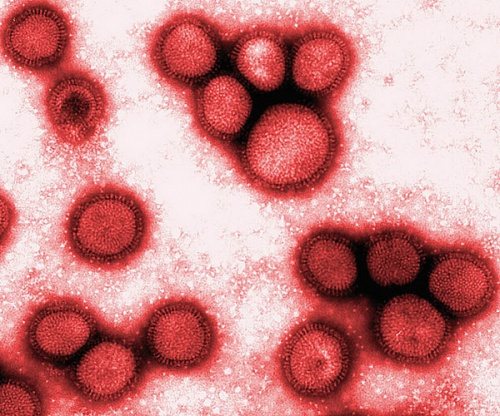
Antibodies to the virus The principle of the analysis is based on the detection of antibodies (IGM and IGG) that the body produces when encountering an infectious agent. Upon initial contact, immunoglobulin M (IGM) is detected in the blood, which disappears from the patient’s blood after a few weeks and is replaced by immunoglobulin G (IGG). IGG remains in the body for a long time.
IGGs come in different types, some IGGs appear early in carriage, and other IGGs appear late in carriage. Performing an ELISA test for the presence of different types of IGM and IGG allows us to establish the stage of the infectious process.
The ELISA reaction, detecting IGG, can only confirm the presence of the virus in the body. It is impossible to determine the role of a pathogen in the development of a specific pathological process by identifying IGG; for this purpose, PCR diagnostics are used.
PCR – diagnostics
Polymerase chain reaction is a typical laboratory test that allows one to determine the presence of pathogen DNA in a test fluid. The material for analysis can be saliva, blood, or fluid from a rash vesicle.
There are qualitative and quantitative PCR methods. The qualitative method makes it possible to determine whether there is DNA of the virus in the material under study; it is less expensive and labor-intensive, and if the result is negative, it allows not to carry out a quantitative analysis. Normally the result is negative. Quantitative analysis determines the amount of virus in the test fluid and, accordingly, its role in a specific pathological process.
How to identify a virus
A general blood test of the patient can indicate to the doctor the need for a detailed examination at the initial stages. If a patient has EBV, the test results will show an increased level of white blood cells.
To diagnose type 4 herpes, your doctor may additionally prescribe:
- PCR studies of blood and saliva. This way you can detect infection in biological fluids.
- Biochemical blood test. It allows you to detect damage to liver tissue.
- Ultrasound examination of the spleen, liver and lymph nodes.
- MFA. It helps identify specific antibodies to the virus.
- Test for HIV infection. This is explained by the fact that HIV has similar symptoms to herpes type 4.
- Biopsy. Necessary for malignant tumors.
